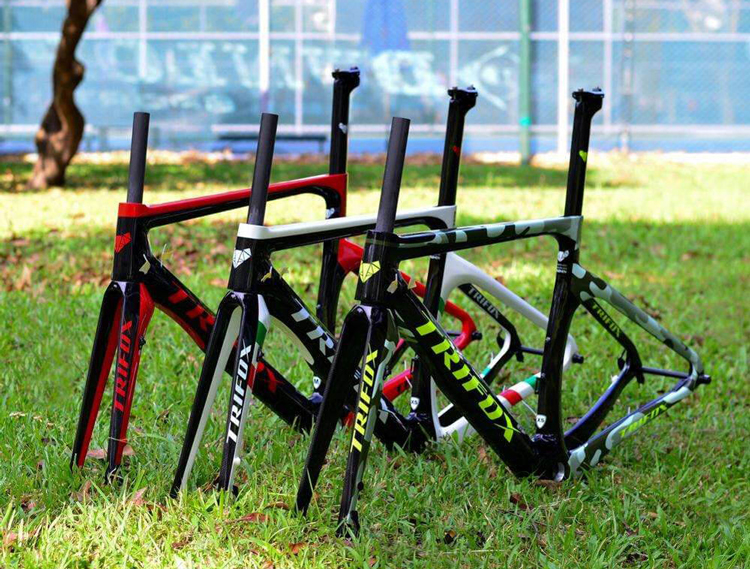The width, angle, and elevation of the handlebar directly affect the handling and comfort of the bicycle. So, is the width and angle of the handlebar really important? Below, we will talk about how to correctly choose the width and angle of the handlebar through the three most common types of mountain bikes.
XC handlebar width and angle selection
As the only mountain bike event in the Olympics, the current xc track is becoming more and more complex, the wheel diameter is getting bigger and bigger, and there are more and more types of handlebars, such as integrated handlebars.
Compared with the other two models, the xc climbs more slopes. Now, most xc riders will choose a longer negative angle stem. The handlebar width is generally 640~740mm. The handlebar is generally 640~740mm in order to exert force and press the front wheel. Bring good support to the cradle.
The angle of the handlebars is also relatively forward, but due to the increasingly rugged and complex terrain and the use of 29-inch wheel diameters, many professional drivers have chosen handlebars with a 5-10 degree lift, which can ensure the efficiency of climbing. At the same time, it brings a certain improvement to the stability of the downhill bike control and flying over the platform.
Personally, I feel that the xc handlebars can now be selected from 680 to 700mm, and the angle can remain unchanged. If you are interested, you can try.

Enduro handlebar width and angle selection
The adjustment of the front and rear shock absorbers directly affects your position on the bike, so before choosing the handlebar height, make sure that the front and rear shock absorbers have been adjusted.
Unlike roads, mountain bikes are more flexible, so there is no “recommended” absolute handlebar height. Handlebar lifting is subjective and depends on your own personal preferences, height, choice of bike, and terrain.
However, the “extremely low” and “extremely high” heights of some foreign professionals often appear in the video, which may help you find a lift that suits you.
For enduro models, the handlebar lift generally tends to be between 20 degrees and 35 degrees. Because this is not only conducive to uphill force but also can bring stable control to downhill.
The 780mm handlebar width is more suitable for the shoulder width of our Asians. Now, most of the original handlebars are 800mm, and many people buy them and install them directly. This will lose your strength and control of the bicycle in climbing and downhill, especially cycling on a narrow forest road. It is also a big test for your control.
As the current handlebars are somewhat drifting behind (the angle of the handlebar’s backward offset is about 5-15 degrees), the installation angle can be selected as far back as possible in the middle (there is a digital scale on the handlebar, and different brands of scales Mean different).
Because of the offset of those few degrees, the feeling and confidence of lifting the front of the bicycle and controlling the bicycle will be greatly increased, but the installation angle should not be too backward, so it will be very strange when going uphill and it will not be sent. force. After confirming the width, try both the front and back angles to find the angle that suits you.
DH handlebar width and angle selection
In Red Bull Rampage (Red Bull Rampage), the various gods operate so smoothly, the choice of handlebars is also crucial.
DH handlebars are mainly divided into two types, racing type, and action type. For racing type, you can choose a handlebar with a lower elevation (20-30 degrees). The same is true. The width of 780mm is more suitable for us Asians (if Your shoulder width is enough, you can use 800mm).
The handlebars of downhill bikes are mainly for bike control, and the angle can be selected to be centered and rearward, and the center of gravity is relatively backward when going downhill to improve stability.
If you are an action-type DH player, you can choose to raise the handlebars higher (about 30-40 degrees), and the width can also be relatively reduced, about 740mm~780mm, which is convenient for making “perfect” movements when flying bags in the chartered field.




















































































